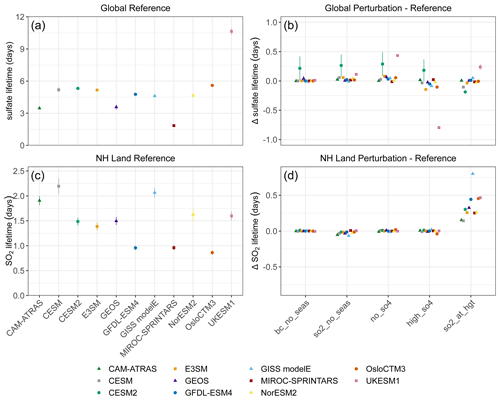2024-02-22 パシフィック・ノースウェスト国立研究所(PNNL)
<関連情報>
- https://www.pnnl.gov/publications/sulfur-dioxide-emission-height-reveals-uncertainty-radiative-forcing-across-earth
- https://acp.copernicus.org/articles/23/14779/2023/
エミッションモデル相互比較プロジェクト(Emission-MIP):エミッション特性に対するモデル感度の定量化 The Emissions Model Intercomparison Project (Emissions-MIP): quantifying model sensitivity to emission characteristics
Hamza Ahsan, Hailong Wang, Jingbo Wu, Mingxuan Wu, Steven J. Smith, Susanne Bauer, Harrison Suchyta, Dirk Olivié, Gunnar Myhre, Hitoshi Matsui, Huisheng Bian, Jean-François Lamarque, Ken Carslaw, Larry Horowitz, Leighton Regayre, Mian Chin, Michael Schulz, Ragnhild Bieltvedt Skeie, Toshihiko Takemura, and Vaishali Naik
Atmospheric Chemistry and Physics Published:01 Dec 2023
DOI:https://doi.org/10.5194/acp-23-14779-2023

Abstract
Anthropogenic emissions of aerosols and precursor compounds are known to significantly affect the energy balance of the Earth–atmosphere system, alter the formation of clouds and precipitation, and have a substantial impact on human health and the environment. Global models are an essential tool for examining the impacts of these emissions. In this study, we examine the sensitivity of model results to the assumed height of SO2 injection, seasonality of SO2 and black carbon (BC) particulate emissions, and the assumed fraction of SO2 emissions that is injected into the atmosphere as particulate phase sulfate (SO4) in 11 climate and chemistry models, including both chemical transport models and the atmospheric component of Earth system models. We find large variation in atmospheric lifetime across models for SO2, SO4, and BC, with a particularly large relative variation for SO2, which indicates that fundamental aspects of atmospheric sulfur chemistry remain uncertain. Of the perturbations examined in this study, the assumed height of SO2 injection had the largest overall impacts, particularly on global mean net radiative flux (maximum difference of −0.35 W m−2), SO2 lifetime over Northern Hemisphere land (maximum difference of 0.8 d), surface SO2 concentration (up to 59 % decrease), and surface sulfate concentration (up to 23 % increase). Emitting SO2 at height consistently increased SO2 and SO4 column burdens and shortwave cooling, with varying magnitudes, but had inconsistent effects across models on the sign of the change in implied cloud forcing. The assumed SO4 emission fraction also had a significant impact on net radiative flux and surface sulfate concentration. Because these properties are not standardized across models this is a source of inter-model diversity typically neglected in model intercomparisons. These results imply a need to ensure that anthropogenic emission injection height and SO4 emission fraction are accurately and consistently represented in global models.



